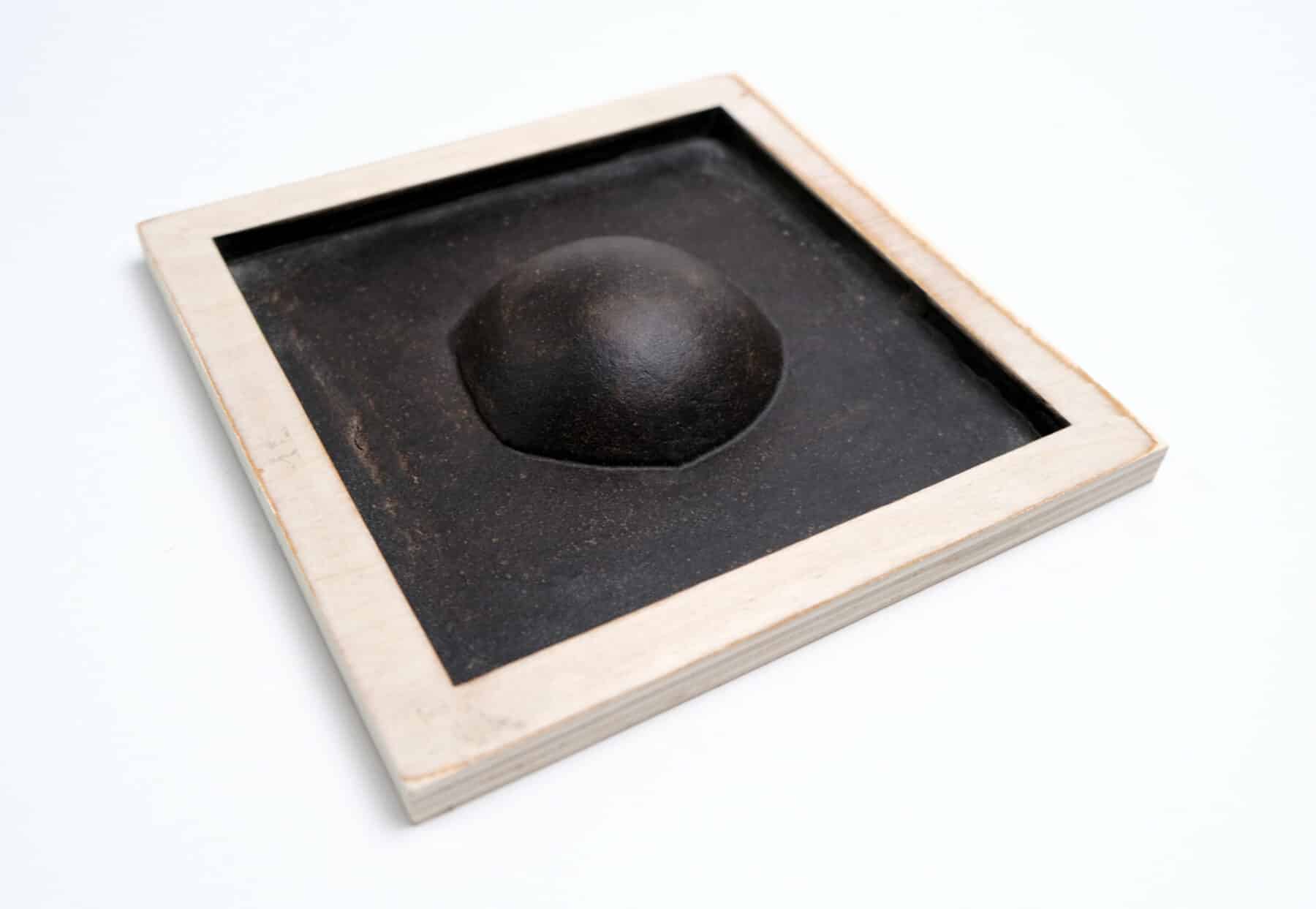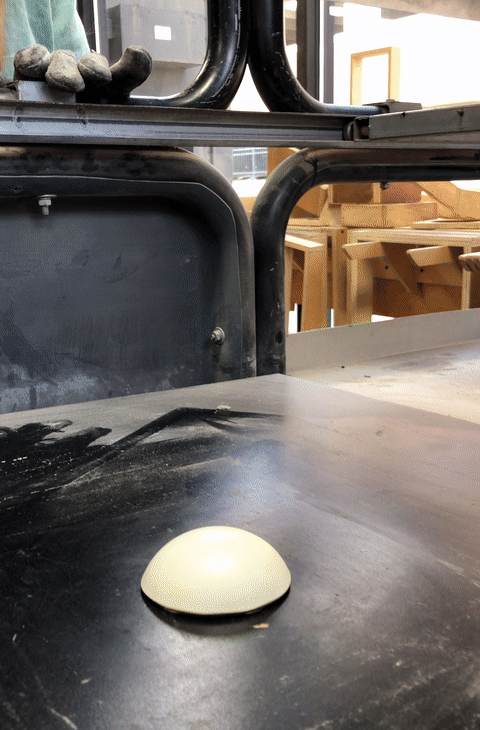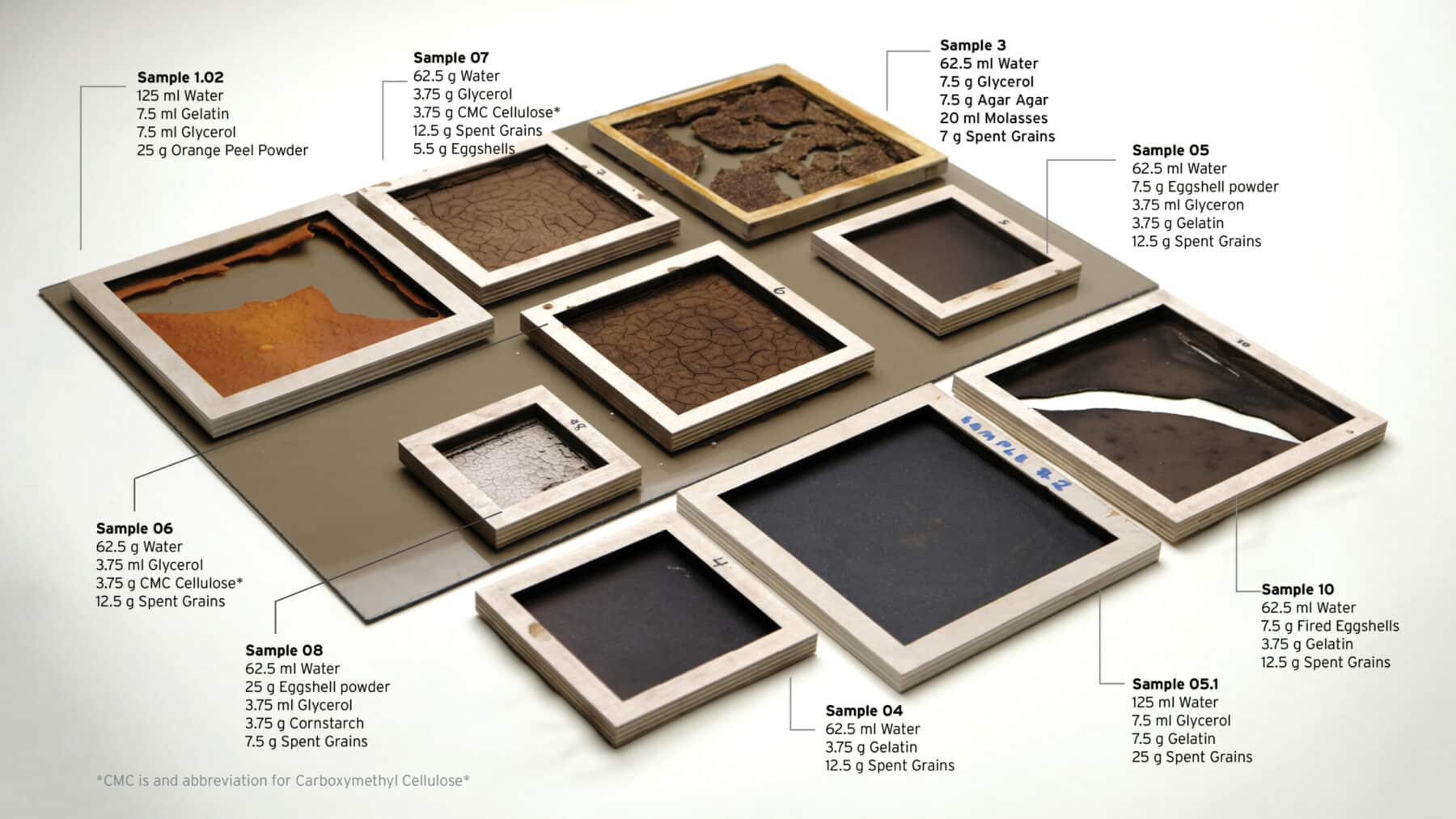Can Crop Waste Reduce Plastic Pollution?

VISION: Use agricultural byproducts like molasses from sugar beets and spent grains from beer to make plastic consumer packaging more sustainable and circular.
Team: Joseph Cardenas, Sarah Craven
School: College for Creative Studies
There is a lifespan mismatch between many consumer packaged goods and their packaging material. Household items like yogurt, berries, or laundry detergent are perishable and not meant to last forever. However, the vessels that store them—cups, containers, and bottles—are often made of plastic that will persist for hundreds of years without any degradation.

Students from the College for Creative Studies went searching for an alternative, which led them to experiment with an abundant resource in the United States: industrial food byproducts. They discovered millions of tons of leftovers from sugar beets, which have molasses as a byproduct, and from the spent grains used in beer making, which are 17% cellulose and 20% lignin. By adding glycerol and gelatin to the molasses and grain mixture, they created a flexible biopolymer-based material that they called ReForm. Unlike bioplastics that use cornstarch or sugar, the leftover byproducts used in Reform don’t require cropland or irrigation to produce.
Their prototypes for the project were created using a type of vacuum forming called thermoforming. They heated the material to make it malleable, draped it over a mold, and then suctioned the air out to conform to the mold shape. While maintaining the properties needed for packaging, ReForm is also biodegradable, so it can be sustainably disposed of after use.

